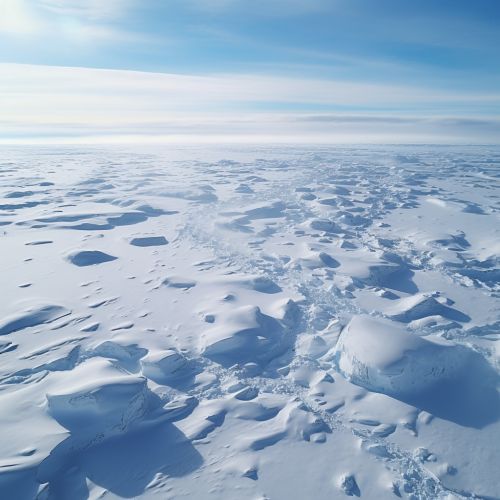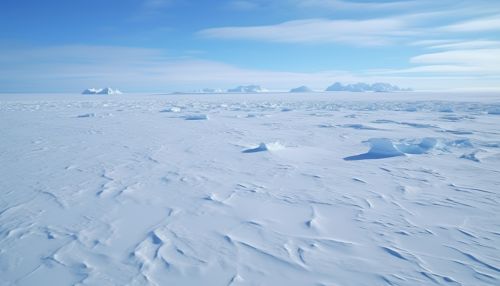East Antarctica
Geography
East Antarctica, also known as Greater Antarctica, is the larger of the two major divisions of the Antarctic continent. It is situated in the eastern hemisphere and is almost entirely covered by the East Antarctic Ice Sheet, the largest ice sheet on Earth. The region is characterized by its high altitude, low temperatures, and strong winds.


Geology
The geology of East Antarctica is diverse and complex. The region is predominantly composed of a Precambrian shield, known as the East Antarctic Craton. This ancient rock formation is over a billion years old and provides valuable insights into the geological history of the Earth. The region also contains significant deposits of various minerals, including coal, iron, copper, gold, and oil, although exploitation of these resources is currently prohibited by the Antarctic Treaty System.
Climate
The climate of East Antarctica is the coldest on Earth, with temperatures regularly falling below -80°C in the interior during winter. The region is also extremely dry, receiving less precipitation than most deserts. This combination of extreme cold and aridity creates a unique environment known as a polar desert.
Flora and Fauna
Despite the harsh conditions, a variety of organisms have adapted to survive in East Antarctica. These include several species of krill, silverfish, and toothfish, as well as numerous types of microorganisms. The region is also home to several species of birds, including the Emperor penguin and the Snow petrel.
Human Activity
Human activity in East Antarctica is primarily limited to scientific research. Numerous countries operate research stations in the region, including the Amundsen-Scott South Pole Station operated by the United States and the Vostok Station operated by Russia. These stations conduct research in a variety of fields, including glaciology, meteorology, astronomy, and biology.
Conservation
Conservation efforts in East Antarctica are governed by the Antarctic Treaty System, which prohibits military activity, mineral mining, nuclear testing, and nuclear waste disposal. The treaty also supports scientific research and protects the continent's ecozone. Ongoing threats to the region include climate change and illegal fishing.
